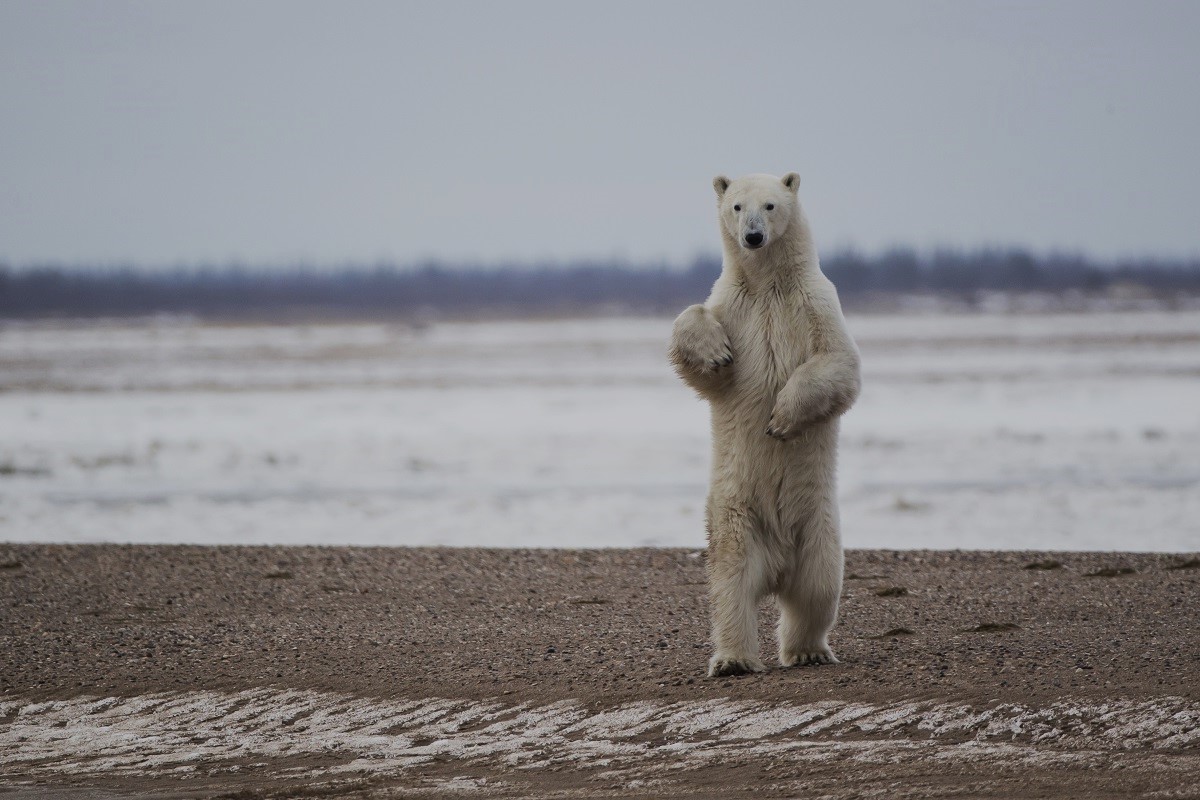
Did you know that the polar bear, often called the "King of the Arctic," is one of the most fascinating creatures on Earth? These majestic animals are not just the largest land carnivores but also skilled swimmers, capable of covering vast distances in search of food. Polar bears have a unique adaptation that allows them to thrive in the harsh Arctic environment. From their incredible sense of smell to their thick fur and blubber, every aspect of their biology is designed for survival. In this post, we'll dive into 35 intriguing facts about these magnificent creatures, shedding light on their behavior, habitat, and the challenges they face in a rapidly changing world. Get ready to be amazed by the wonders of the polar bear!
Key Takeaways:
- The King Polar Bear, with its massive size and unique adaptations, relies on sea ice for hunting and faces threats from climate change and human activities.
- Polar bears, the "sea bears," are fascinating apex predators known for their intelligence, curiosity, and playful behaviors, but they are vulnerable to habitat loss and pollution.
The Mighty King Polar Bear
Polar bears are fascinating creatures that rule the Arctic. Known for their strength and resilience, these majestic animals have many intriguing aspects worth exploring. Let's dive into some captivating facts about the king of the Arctic.
Physical Characteristics
Polar bears are uniquely adapted to their harsh environment. Their physical traits help them survive and thrive in the icy wilderness.
- Polar bears have black skin under their white fur, which helps them absorb heat from the sun.
- Their fur is not actually white but transparent. It reflects visible light, making them appear white.
- They have a thick layer of blubber, up to 4.5 inches thick, which provides insulation against the cold.
- Polar bears can weigh up to 1,500 pounds, with males being significantly larger than females.
- Their paws are enormous, measuring up to 12 inches across, which helps distribute their weight on thin ice.
Habitat and Range
These Arctic giants have a vast range, spanning several countries and diverse environments.
- Polar bears are found in the Arctic regions of Canada, Russia, Greenland, Norway, and the United States (Alaska).
- They prefer sea ice habitats, where they can hunt seals, their primary food source.
- During the summer, when sea ice melts, polar bears may travel hundreds of miles to find food.
- They are excellent swimmers, capable of swimming for days at a time to reach new ice floes.
- Polar bears rely on sea ice for hunting, resting, and breeding, making them highly vulnerable to climate change.
Diet and Hunting
Polar bears are apex predators with a diet that reflects their position at the top of the food chain.
- Their primary prey is seals, particularly ringed and bearded seals.
- They use a method called still-hunting, waiting patiently by seal breathing holes to catch their prey.
- Polar bears have a highly developed sense of smell, capable of detecting seals nearly a mile away.
- They can consume up to 100 pounds of blubber in one sitting, providing essential energy and nutrients.
- In times of scarcity, polar bears may scavenge carcasses or eat small mammals, birds, and vegetation.
Reproduction and Lifespan
The life cycle of polar bears is fascinating, with unique reproductive behaviors and challenges.
- Female polar bears give birth to cubs in dens made of snow and ice.
- Cubs are born blind and weigh only about 1.5 pounds, but they grow rapidly under their mother's care.
- A typical litter consists of two cubs, though single and triplet births can occur.
- Cubs stay with their mother for about two and a half years, learning essential survival skills.
- Polar bears can live up to 25 years in the wild, though many do not reach this age due to various threats.
Behavior and Social Structure
Understanding polar bear behavior provides insight into their survival strategies and social interactions.
- Polar bears are generally solitary animals, except for mothers with cubs or during mating season.
- They communicate through vocalizations, body language, and scent markings.
- Polar bears are known for their intelligence and problem-solving abilities, often using tools to access food.
- They have a keen sense of curiosity, which sometimes leads them to human settlements in search of food.
- During the summer, polar bears enter a state of walking hibernation, reducing their metabolic rate to conserve energy.
Conservation Status
Polar bears face numerous threats, making conservation efforts critical for their survival.
- The IUCN lists polar bears as vulnerable, with climate change being the primary threat to their habitat.
- Melting sea ice reduces their hunting grounds, leading to malnutrition and lower cub survival rates.
- Pollution, particularly from oil spills and industrial chemicals, poses significant risks to polar bear health.
- Human activities, such as shipping and tourism, can disrupt polar bear habitats and behaviors.
- Conservation efforts include international agreements, protected areas, and research programs to monitor and support polar bear populations.
Fun and Lesser-Known Facts
Beyond their well-known traits, polar bears have some surprising and lesser-known characteristics.
- Polar bears have been known to slide down icy slopes for fun, much like children on a playground.
- They can run up to 25 miles per hour on land, despite their large size.
- Polar bears have a unique way of cooling off, lying on their backs with their feet in the air.
- Their scientific name, Ursus maritimus, means "sea bear," reflecting their strong swimming abilities.
- Polar bears are the only bear species considered marine mammals due to their reliance on the ocean for survival.
Final Thoughts on King Polar Bears
King Polar Bears are fascinating creatures with unique traits. From their massive size to their incredible hunting skills, they truly stand out in the animal kingdom. These majestic animals can weigh up to 1,500 pounds and survive in some of the harshest conditions on Earth. Their thick fur and layer of fat keep them warm in freezing temperatures, while their keen sense of smell helps them locate prey from miles away.
Understanding these facts about King Polar Bears not only highlights their importance in the ecosystem but also underscores the need for conservation efforts. Climate change poses a significant threat to their habitat, making it crucial to protect these magnificent animals. By spreading awareness and supporting conservation initiatives, we can help ensure that future generations will continue to marvel at the wonders of King Polar Bears.
Frequently Asked Questions
Was this page helpful?
Our commitment to delivering trustworthy and engaging content is at the heart of what we do. Each fact on our site is contributed by real users like you, bringing a wealth of diverse insights and information. To ensure the highest standards of accuracy and reliability, our dedicated editors meticulously review each submission. This process guarantees that the facts we share are not only fascinating but also credible. Trust in our commitment to quality and authenticity as you explore and learn with us.


